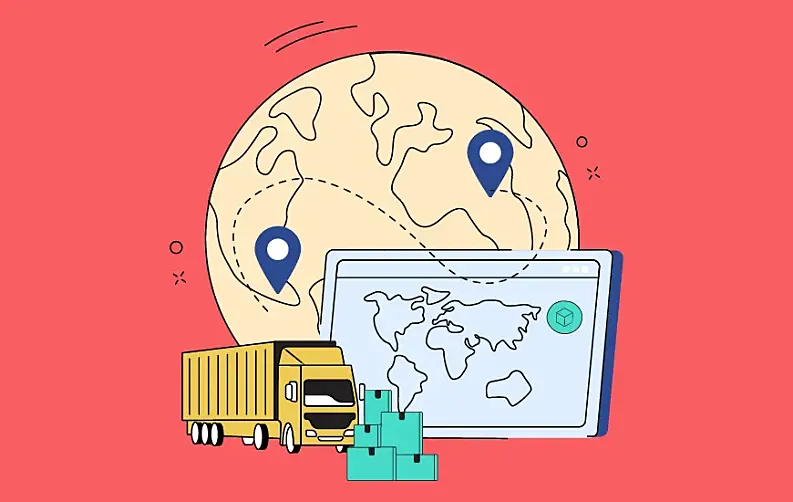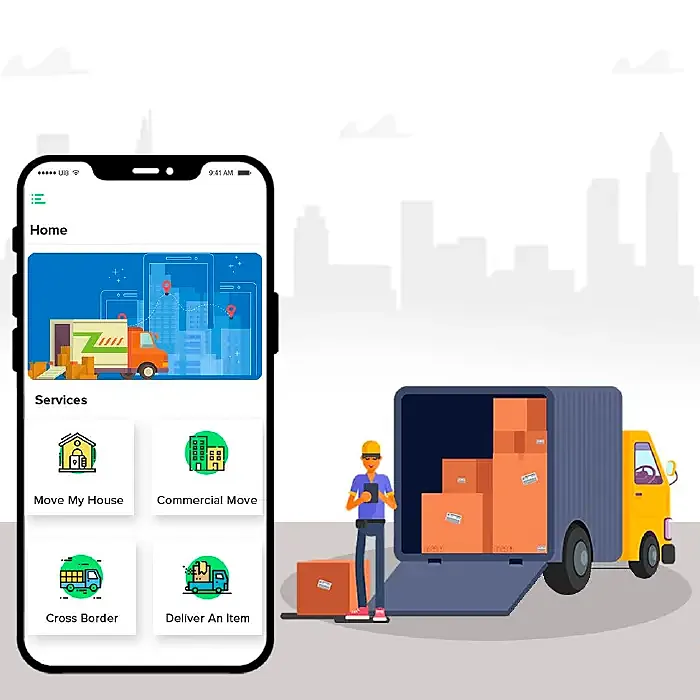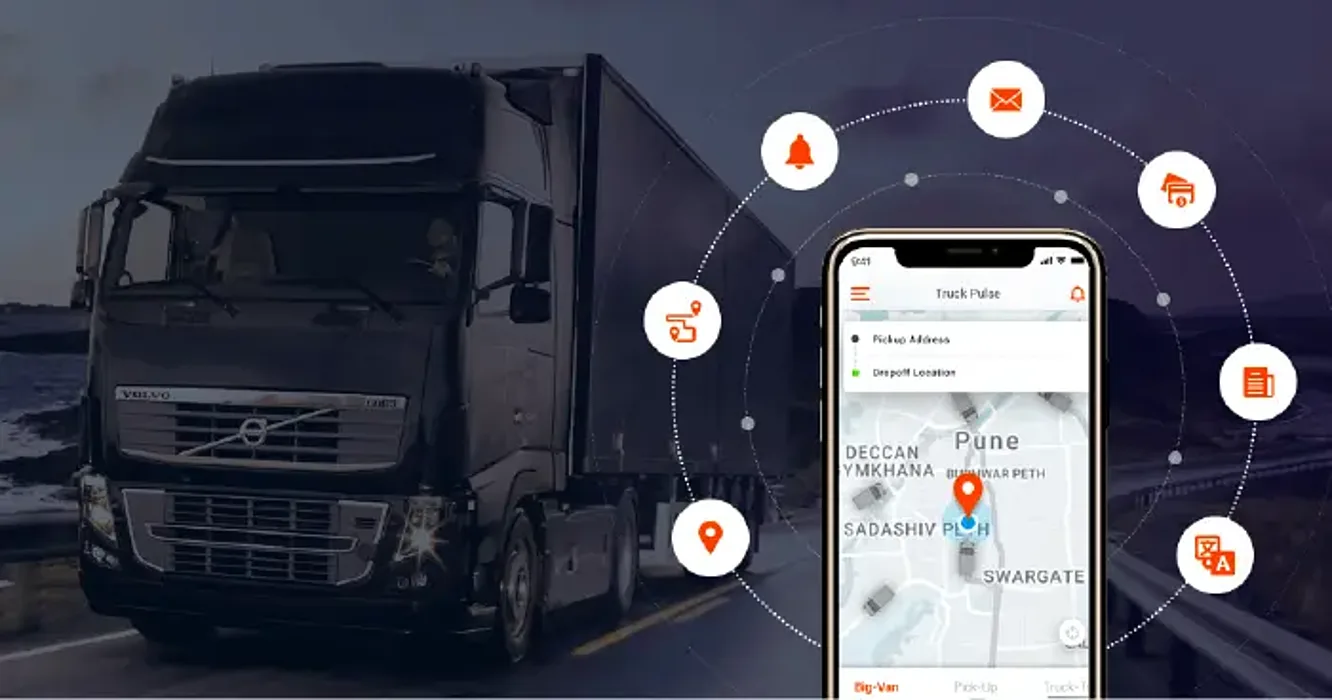
The logistics industry is at the center of everything for transportation, delivering, and storing goods. As of now, the industry has been showing consistent growth in the on-demand logistics market.
In the year 2021 as reported by AlliedMarketResearch, the global on-demand logistics market was close to $12.4 billion. By 2031, this figure is expected to reach $80.6 billion with a CAGR of 20.8%.
This increase has given rise to on-demand logistics app development compelling budding entrepreneurs to figure out the cost of logistics app development. There are a massive number of players that are willing to provide solutions to the logistics industry in the form of apps, including route optimization software like Upper. In fact, there are multiple logistics companies that are willing to build their own application.

Need for Logistics Mobile App Development

It is not a novel thought for the logistics industry to build a logistics app. However, why is that the case?
Well, the work in logistics is data-heavy. From tracking reports to transactional reports and invoices, everything needs to be recorded within the system for insights. These insights help in predicting possible business and optimizing workflows for different use cases. However, there are multiple obvious reasons behind the inclusion of a mobile app in the logistics industry.
Some of the most common needs of logistic mobile app development are mentioned below:
1. Reduce the Amount of Paperwork Involved
In terms of workflow, logistics is a very paper-heavy industry. Paper heavy as in there are loads of documents that are processed on a daily basis. Documents such as bills of lading, commercial invoice, packing list, arrival notice, etc. In logistics, apps can be utilized to input the data directly into the system without any problem. This would reduce the additional usage of paper and also help reduce the carbon footprint.
2. Better Control over Tracking of Vehicles
There are multiple transportation dispatch apps & software that help in tracking vehicles. Some examples of this type of application are Tookan, Motive, OptimoRoute, Samsara, etc. These apps help streamline the tracking problem and manage vehicle control by creating logs during a trip start. Enablement of this in the process makes it easier for overall tracking of the vehicles dispatched.
3. Optimization of Cost, Time, and Resources
Reducing the number of resources utilized or optimizing the existing usage is one of the biggest direct reasons behind the development of a logistics mobile app. By utilizing applications for tracking the transactions, it becomes easy to handle the data, and the transactions itself. With data management work delegated to an app, the amount of cost associated, the time required, and the overall associated resources reduce.
4. Optimization of Workflows
A manual workflow that is completely dependent on human resources can be very slow. For instance, even for a single file or a transaction, there needs to be communication between two parties that requires time further delaying the process. However, with a SaaS-based app, the data is accessible from any place, at any time. These apps also provide access-based login so that only the person with authority has access to that data. Also for operations such as form creation, data entry, management of data, bulk processing of data, etc, apps can be used that further optimize the process.
5. Processing of Invoices
There are multiple types of invoices such as proforma invoices, interim invoices, collective invoices, creative invoices, etc. In essence, there is an entire industry of document automation that largely caters to only processing invoices. There are several softwares and mobile app versions that help with the ordeal.
6. Archival of Data
Managing and storing data is one of the biggest use cases of logistics apps. With apps that cater to logistics upon the creation of a transaction, the data is directly stored in the central repository.
Note: Want to learn about the best DApp development companies, click on the link provided.

Different Types of Logistics Applications for Logistics Mobile App Development
There are several types of logistics applications that can be looked at from the perspective of logistics mobile app development. These are:
- Fleet Routing Software
- Supply Chain Management
- Route Optimization Software
- Realtime Transportation Management Software
- Fleet Management Software
- Asset Tracking & Management Software
- Realtime Supply Chain Visibility Software
- Digital Twin Technology
- Artificial & Augmented Reality Technology
- Transportation Management
Complete Guide to Logistics App Development
There are certain steps that need to be followed in order to understand “How to build logistics app?”. To truly determine the cost of logistics app development, we need to understand the different steps that are taken to build a logistics app and logistics mobile app features. Therefore, here is our concise logistics app development guide:
1. Define the Target Audience
It is one of the most important steps in the process of logistics app development. Defining the target audience is empirical to understand the logistics app development cost. It is because no two workflows or operational cycle is similar. Therefore, the employees dealing with them will also be different. This creates all the difference adding more to logistics app development.
2. Conduct Market Research
Before hiring anyone and even contemplating the thought of figuring out the cost to develop logistics app, it is essential to understand the need for your app idea in the market. Right now, each and every market is saturated with apps from different ideas. Therefore, it is important to conduct market research to figure out the sustainability of the idea. Market research can also help in understanding the current apps and the pitfall associated with them.
3. Choose Development Platform
The choice of platform i.e. iOS and Android for development directly affect the cost of logistics app development. For instance, if one decides to get native apps, the cost to develop logistics app would double. However, if you decide to go for a hybrid app, the cost to develop logistics app will remain only for a single app. It is because a hybrid app allows a single codebase to be used in different operating systems via a single build. The major drawbacks are performance issues.
4. Select a Technology Stack
The requirements of the logistics industry are quite varied. There are so many different use cases that have their own requirements. For instance push notifications, GPS tracking, remote access, and a lot more. To enable these features, it becomes essential to choose a technology stack that can cater to the requirement.
Now, it is of utter importance to understand that not all technologies that are integrated within an app are open source. Some require fees, and this is majorly the case with APIs that are used along. Also, the hiring cost of developers for different technologies is different. Each of these aspects when combined starts to impact logistics app development cost.
5. Create Wireframe and Design
A wireframe of an app is the skeleton of the entire application. The design of the app is how it is actually going to look with all the colors, content, logos, and buttons. The number of manhours spent on creating the wireframe and design is another determinant of the cost to develop logistics app.
6. Development of Frontend and Backend
The development of frontend and backend is the major contributor to the cost of developing logistics app. In the backend part, the developers develop the server side of things. However, with the front end, the frontend developers write the script for the UI. The logistics app development cost depends both on the number of manhours spent on this work and the expertise of the developers.
7. Test your App
Testing is a rigorous process and can be done in many ways for a prolonged period of time. The main aim of testing is to figure out bugs and to create a smooth experience for the end user. The amount of time spent on this process adds up to the cost of logistics app development.
8. Launch your App
In this phase if we keep the marketing budget of the app aside, during the launch companies are required to pay the listing fee. This fee is one-time for Google Playstore while for Apple one needs to pay a yearly subscription. This is also added to the cost of logistics app development.
9. Maintain your App
Usually, the developers behind the application provide support and maintenance as per the SLA (service level agreement). However for extended support, as a client, you need to pay the company. This is also added to the logistics app development cost.
Cost of Developing Logistics App in 2023

There is no fixed cost associated with logistics similar to the mobile app development cost of any other industry or niche. Also, the cost of developing logistics apps depends on multiple factors just like any other app such as manhours required, tech expertise, the experience of the company, the number of features, etc.
Yet in an article by Appinventiv, the company has stated several figures that are mentioned below:
| Simple On-Demand App | $30,000 to $120,000 |
| Medium Complex On-Demand App | $120,000 to $200,000 |
| Complex App | $200,000 and more |
Note: To read our article on cost to develop an app, click on the link provided.
Wrapping Up!
Understanding the cost of logistics app development is essential. Every startup and entrepreneur starts their vision or app idea with a budget. Understanding, the different spaces where the budget is expendable is empirical to the logistics mobile app development process. It allows one to foresee the possible places of expenditure and estimate the cost of logistics app development for their project. With this article, we have tried to do the same for you.
















